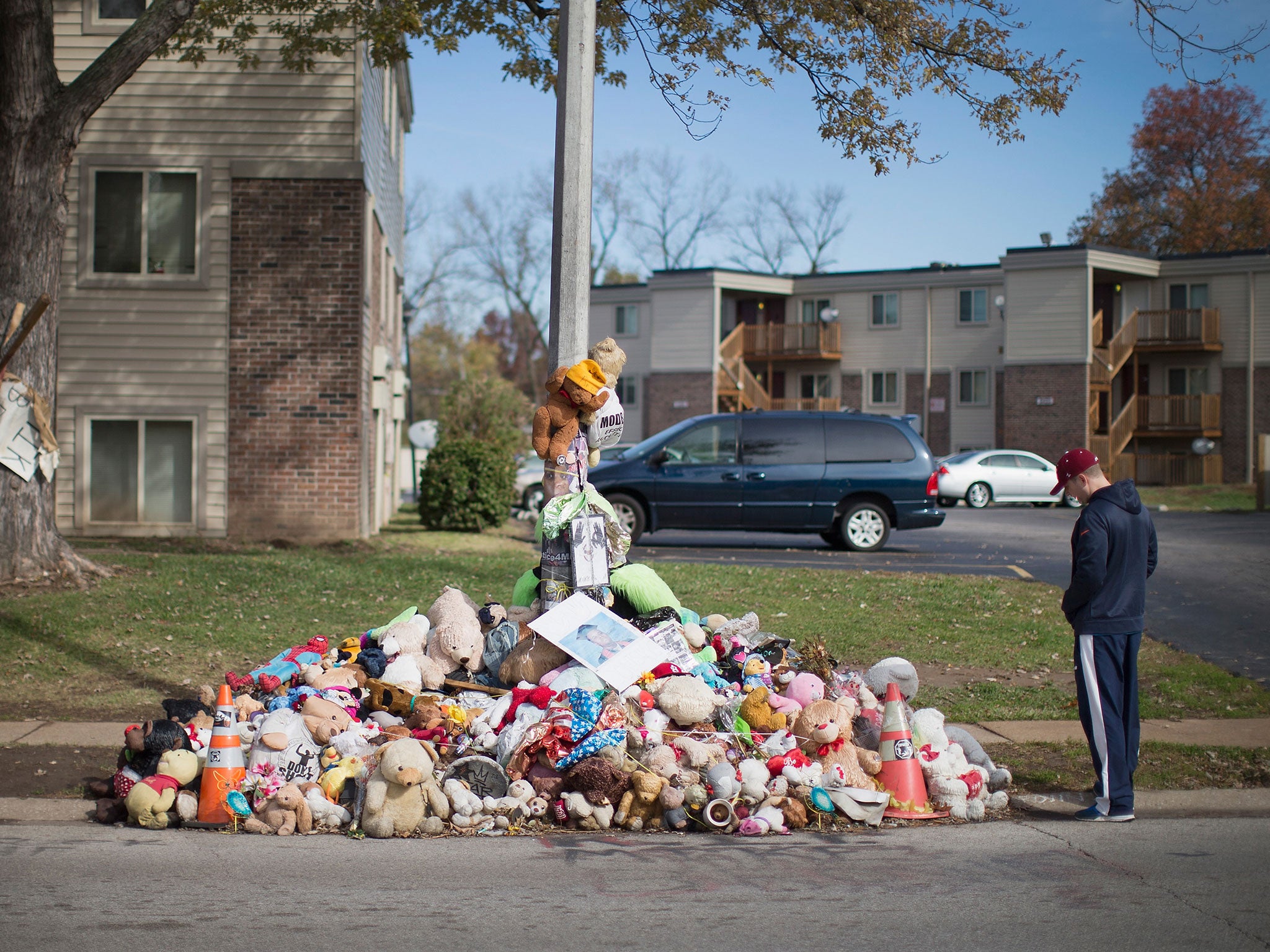Michael Brown shooting: Ferguson braced for more violence after verdict on police shooting of unarmed teenager
Missouri residents fear a repeat of the rioting that followed Michael Brown’s death

Your support helps us to tell the story
From reproductive rights to climate change to Big Tech, The Independent is on the ground when the story is developing. Whether it's investigating the financials of Elon Musk's pro-Trump PAC or producing our latest documentary, 'The A Word', which shines a light on the American women fighting for reproductive rights, we know how important it is to parse out the facts from the messaging.
At such a critical moment in US history, we need reporters on the ground. Your donation allows us to keep sending journalists to speak to both sides of the story.
The Independent is trusted by Americans across the entire political spectrum. And unlike many other quality news outlets, we choose not to lock Americans out of our reporting and analysis with paywalls. We believe quality journalism should be available to everyone, paid for by those who can afford it.
Your support makes all the difference.The calm that has mostly returned to the streets of Ferguson, Missouri, in the wake of the violent protests triggered by the police shooting in August of an unarmed teenager might soon be shattered as a grand jury prepares to return a verdict on the case.
Tense behind-the-scenes negotiations are under way between local police chiefs and representatives of assorted protest groups, many gathered under the banner of the Don’t Shoot Coalition, to establish guidelines for the demonstrations that are almost certain to break out. The risk will be particularly high if, as many expect, no charges are pressed against the officer, Darren Wilson, for the shooting of 18-year-old Michael Brown.
The shooting had racial overtones because Mr Brown was black while Mr Wilson is white.
Ferguson, just north-west of St Louis, became the focus of world attention when a series of night-time marches to protest the 9 August shooting of Mr Brown repeatedly dissolved into violent and chaotic clashes between those protesting and the police, with members of the media caught in the middle. The response of the authorities brought criticism from many quarters, including the White House.
While there is little transparency about the workings of the grand jury that must decide whether or not Mr Wilson should face criminal charges, its verdict is expected within days. The police should “prepare for the worst”, Ferguson Mayor James Knowles said last week.
Protests are unlikely to be limited to Ferguson and could spread across the area and into central St Louis.
There are still conflicting narratives about what happened on the night of the shooting, with some witnesses insisting that Mr Brown was gunned down for doing little more than walking in the middle of the street and that his hands were raised in surrender when he was shot.
But Mr Wilson is believed to have told the grand jury that Mr Brown lunged at him as he sat in his cruiser, punched him and fought to snatch his gun.
The Don’t Shoot Coalition last week issued proposals for 19 Rules of Engagement that both sides would abide by to try to prevent a repeat of the summer’s violence. They include a demand that, unlike in August, the police as far as possible would desist from wearing riot gear when handling the protests and from using paramilitary equipment including armoured vehicles.
Activist groups that mobilised to turn the shooting into a symbol of police abuse of minorities may again converge on Ferguson from across the country. Even a verdict pressing charges may not stop them. “After the verdict, no matter what it is, people are going to pour into the street – either in celebration or in rage,” said Montague Simmons, who leads the Organisation for Black Struggle.
The chief of the Missouri Highway Patrol, Ron Johnson, who was picked to take over the police response to the protests in August after violence spiralled, and his counterparts from Ferguson and St Louis County will appear on local radio shows and speak at community meetings this week to promise restraint from their side and to ask for the same from residents and protesters.
They have already spent the past several weeks seeking out meetings with the various protest groups. “The majority of their group are respectful but have the right to have their emotions heard,” said Sam Dotson, the head of the Ferguson police.
“They don’t want that to be compromised by a small number of people,” he added, referring to individuals who may be set on a violent response to the verdict.
Join our commenting forum
Join thought-provoking conversations, follow other Independent readers and see their replies
Comments